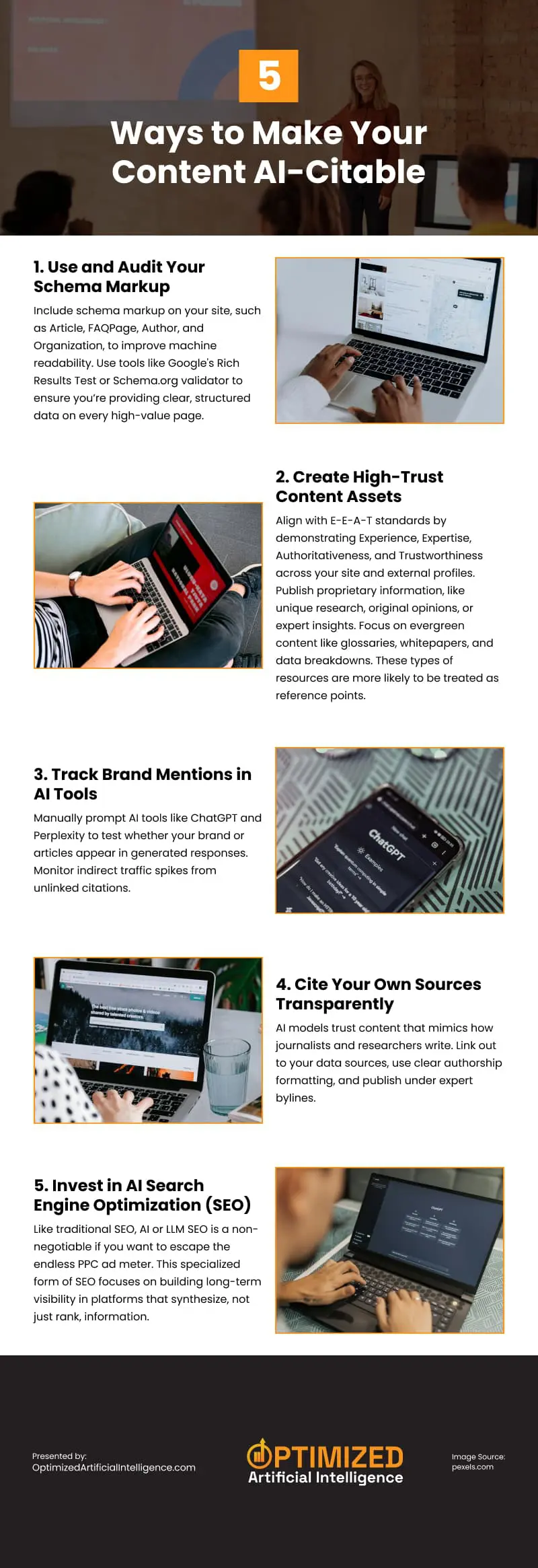
To position yourself as a preferred node in the AI knowledge graph, you don’t need a new website—you need to make your existing content easier for AI systems to understand, evaluate, and cite. To improve machine readability, start by implementing schema markup across key pages using types like Article, FAQPage, Author, and Organization. Tools like Google’s Rich Results Test can help validate your structured data. Focus on publishing high-trust content assets that align with E-E-A-T principles: think proprietary research, expert commentary, or detailed glossaries that AI can reference. Transparency also matters—cite your sources clearly, use expert bylines, and format your content like a journalist or academic would. To measure progress, manually prompt AI tools like ChatGPT and Perplexity to see if your content surfaces in responses, and watch for traffic spikes from unlinked mentions. Finally, invest in AI-focused SEO. Unlike traditional SEO, which fights for search engine rankings, this strategy aims to make your content discoverable and reliable in synthesized answers, giving you long-term visibility without relying on paid ads.
Comments
Download this infographic.
